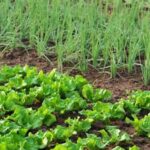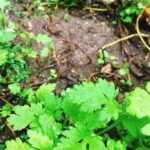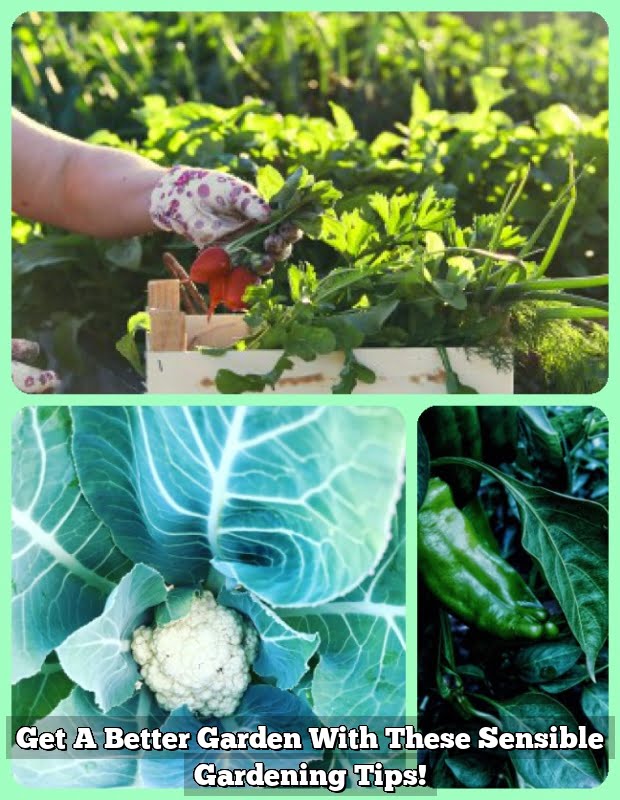Vegetable gardening can be a rewarding and relaxing hobby, especially for beginners looking to try their hand at growing their own food. In this article, we will explore some valuable beginning vegetable gardening tips to help you get started on your gardening journey. Whether you have a backyard or a small balcony, cultivating your vegetables can be a fulfilling experience that allows you to enjoy fresh produce right from your own garden.
One of the key aspects of successful vegetable gardening is choosing the right location for your plants. Factors such as sunlight exposure, soil quality, and water availability play a crucial role in determining the health and productivity of your garden. By understanding these considerations and selecting an optimal spot for your vegetable patch, you can set yourself up for a successful growing season.
As a beginner, deciding on the type of vegetables to grow can seem overwhelming with the multitude of options available. However, there are several easy-to-grow varieties that are perfect for novice gardeners. From leafy greens like lettuce and spinach to root vegetables like carrots and radishes, we will explore some suitable options to kickstart your vegetable gardening journey on the right foot.
Choosing the Right Location
When it comes to beginning vegetable gardening, one of the most important factors to consider is choosing the right location for your garden. Sunlight, soil quality, and water availability are essential elements that can determine the success of your vegetable plants. Here are some tips to help you select the best spot for your garden:
- Sunlight: Most vegetables require at least 6-8 hours of sunlight per day to thrive. Choose a location in your yard or balcony that receives adequate sunlight throughout the day.
- Soil Quality: Test your soil to determine its pH levels and nutrient content. Most vegetables prefer well-draining soil rich in organic matter. If your soil lacks nutrients, consider adding compost or fertilizer to improve its quality.
- Water Availability: Make sure your chosen location has access to water for irrigation. Consider installing a drip irrigation system or placing your garden near a water source for easy watering.
By considering these factors before you start planting, you can create an optimal environment for your vegetable garden to flourish. Remember, the success of your garden starts with choosing the right location.
Once you have identified the perfect spot for your vegetable garden, it’s time to move on to selecting the types of vegetables you want to grow. Beginner gardeners should start with easy-to-grow options that require minimal maintenance and yield satisfying results. Here are some popular vegetables that are ideal for novice gardeners:
- Tomatoes: A versatile and rewarding crop that thrives in sunny locations and produces a bountiful harvest.
- Lettuce: Fast-growing and suitable for both containers and ground planting, lettuce is perfect for beginners seeking quick results.
- Zucchini: This summer squash is low-maintenance and prolific, making it a great choice for first-time vegetable growers.
By choosing these beginner-friendly options, you can gain valuable experience in growing vegetables while enjoying the fruits of your labor without feeling overwhelmed by complex plant care requirements. Get ready to kick off your vegetable gardening journey with these easy-to-grow selections.
Deciding on the Type of Vegetables to Grow
When beginning vegetable gardening, it’s essential to choose the right type of vegetables to grow. As a beginner, opting for easy-to-grow options can increase your chances of success and make the experience more enjoyable. Here are some popular vegetables that are perfect for beginners:
- Tomatoes: One of the most popular choices for beginners, tomatoes are relatively easy to grow and produce bountiful harvests.
- Radishes: These fast-growing root vegetables are perfect for beginners who want to see quick results in their garden.
- Zucchini: Known for their prolific growth, zucchinis are ideal for beginners looking for a low-maintenance option.
In addition to these options, lettuce, carrots, and green beans are also great choices for novice vegetable gardeners. When deciding on the type of vegetables to grow in your garden, consider your personal preferences as well as the climate and growing conditions in your area.
Once you have selected the vegetables you want to grow, make sure to research each plant’s specific care instructions to ensure they thrive in your garden. Understanding the unique needs of each vegetable will help you provide adequate care and support their growth throughout the growing season. With proper research and attention, even beginner gardeners can enjoy a successful harvest of fresh, homegrown produce.
As you gain more experience and confidence in your gardening abilities, don’t be afraid to experiment with different types of vegetables and expand your garden. The joy of seeing your plants flourish and enjoying the fruits (and vegetables) of your labor is one of the most rewarding aspects of vegetable gardening. So roll up your sleeves, get your hands dirty, and start growing delicious veggies in your own backyard.
Essential Gardening Tools and Supplies
| Gardening Tool or Supply | Description |
|---|---|
| Garden gloves | Protect your hands from dirt, cuts, and thorns while working in the garden. |
| Trowel | An essential tool for digging small holes for planting seeds or transplants. |
| Garden fork | Useful for breaking up soil and mixing in compost or other amendments. |
In addition to basic hand tools, you may also need a watering can or garden hose for watering your plants, as well as a sturdy wheelbarrow for transporting soil, mulch, and other materials around your garden. A good pair of pruning shears will also come in handy for trimming plants and harvesting produce. When starting on your vegetable gardening journey, investing in quality tools will make the process smoother and more enjoyable.
Furthermore, it’s essential to have the necessary supplies such as potting soil or compost to ensure that your plants have access to the nutrients they need to thrive. Mulch is another important supply that helps retain moisture in the soil, suppress weeds, and regulate soil temperature. By having these tools and supplies ready before you start planting, you’ll set yourself up for success from the very beginning of your vegetable gardening experience.
Preparing the Soil
When it comes to beginning vegetable gardening, one of the most crucial steps you need to take is preparing the soil. Healthy and nutrient-rich soil is essential for the success of your plants and ultimately, your harvest. There are several tips and techniques that you can follow to ensure that your soil provides the necessary support for your vegetables to thrive.
First and foremost, start by testing your soil. You can do this by using a simple at-home testing kit or by sending a sample to a local extension office for analysis. This will help you determine the pH level of your soil as well as any nutrient deficiencies that may need to be addressed. Based on the results, you can then make amendments such as adding compost, organic matter, or specific fertilizers to improve the quality of your soil.
Another important tip for preparing healthy soil in your vegetable garden is to make sure it has proper drainage. Excess water can lead to root rot and other issues in your plants, so ensuring good drainage is crucial. You can achieve improved drainage by adding organic matter like compost or peat moss into the soil mix. This not only helps with drainage but also enhances nutrient retention and promotes beneficial microbial activity in the soil.
To keep your soil healthy throughout the growing season, consider implementing crop rotation practices. By rotating where different types of vegetables are planted each year, you can help reduce nutrient depletion in the soil and minimize disease build-up. Additionally, adding cover crops during fallow periods can help prevent erosion, suppress weed growth, and further improve soil health for future plantings.
| Soil Preparation Tips | Benefits |
|---|---|
| Test your soil | Determine pH levels and nutrient deficiencies |
| Ensure proper drainage | Prevents root rot and promotes microbial activity |
| Implement crop rotation | Reduces nutrient depletion and disease build-up |
Planting and Sowing Seeds
Once you’ve chosen your vegetables, it’s time to prepare the soil for planting. Make sure the soil is loose and well-draining to provide a healthy environment for your plants’ roots to grow. Create rows or mounds based on the specific needs of each vegetable type – some plants require more space or deeper planting depths than others. Follow the instructions on seed packets closely to ensure proper spacing and depth when sowing seeds.
After planting your seeds, water them gently but thoroughly to ensure good contact between the seeds and the soil. Additionally, consider covering newly planted seeds with mulch to help retain moisture in the soil and suppress weed growth. As your seeds germinate and seedlings emerge, be sure to monitor their growth regularly and provide them with adequate water and sunlight as needed.
Remember that each vegetable may have different watering requirements, so pay attention to individual plant needs as they grow. With patience and care, your vegetable garden will soon start sprouting with fresh produce ready for harvest.
Watering and Fertilizing
Watering Guidelines
When it comes to watering your vegetable garden, it’s crucial to strike a balance. Overwatering can lead to root rot and other issues, while underwatering can stunt the growth of your plants. A general rule of thumb is to water deeply but infrequently. This encourages the roots to grow deeper into the soil in search of moisture, making your plants more resilient to drought conditions.
It’s also essential to water in the morning to allow foliage time to dry out during the day, reducing the risk of fungal diseases. Avoid wetting the leaves when watering and focus on delivering water directly to the base of the plants. Using a drip irrigation system or a soaker hose can help make this task more efficient and effective.
Fertilizing Tips
Providing your vegetable plants with the proper nutrients is essential for them to thrive and produce a bountiful harvest. Before planting, it’s a good idea to amend your soil with organic matter like compost to boost its fertility. During the growing season, supplement with a balanced fertilizer that provides essential macronutrients like nitrogen, phosphorus, and potassium.
Remember not to over-fertilize, as this can lead to excessive leaf growth at the expense of fruit production. Follow recommended application rates on the fertilizer packaging and avoid fertilizing during hot weather or drought conditions, as this can stress your plants. Keep an eye on your plants for signs of nutrient deficiencies, such as yellowing leaves or stunted growth, and adjust your fertilization routine accordingly.
Monitoring Soil Moisture and Nutrient Levels
Regularly check the moisture level of your soil by sticking your finger about an inch into the ground. If it feels dry at that depth, it’s time to water. Additionally, consider investing in a soil testing kit to monitor nutrient levels in your soil throughout the growing season.
This will help you determine if any amendments are needed to ensure optimal plant health and productivity. By staying on top of watering and fertilizing needs, you’ll set yourself up for a successful vegetable garden that yields delicious results.
Dealing With Pests and Diseases
One effective way to combat pests in your vegetable garden is through natural predators like ladybugs or lacewings, which feed on aphids and other harmful insects. Additionally, using organic insecticidal soaps or neem oil can help control pest populations without harming beneficial insects. For larger pests like rodents or deer, consider installing fencing or using deterrents like netting or chemical repellents.
When it comes to preventing and managing diseases in your garden, proper plant spacing can help improve air circulation and reduce the risk of fungal infections. Choosing disease-resistant varieties of vegetables can also be beneficial in minimizing the chances of infection. If you do notice signs of disease on your plants, promptly remove affected foliage and dispose of it properly to prevent further spread. Consider rotating crops each season to prevent soil-borne diseases from persisting.
Regularly monitoring your garden for signs of pests or diseases is key to catching problems early on before they become widespread. By practicing good garden hygiene, implementing preventative measures, and staying proactive in addressing potential issues, you can successfully manage pests and diseases in your vegetable garden and enjoy a bountiful harvest at the end of the growing season.
Harvesting and Enjoying the Fruits (And Vegetables) of Your Labor
As you embark on your vegetable gardening journey, the moment of harvest is undoubtedly one of the most rewarding and exciting parts of the process. After putting in the time and effort to nurture your plants from seeds or seedlings to full-grown vegetables, it’s time to reap the fruits (and vegetables) of your labor. But harvesting is not just about picking your crops; it’s also about knowing when and how to do it effectively.
One key tip for a successful harvest is to regularly inspect your plants for signs of readiness. Different vegetables have their own unique indicators that they are ready to be harvested.
For example, tomatoes should be picked when they are fully colored and slightly soft to the touch, while root vegetables like carrots can be gently pulled from the soil when they reach the desired size. By paying attention to these cues, you can ensure that you harvest your produce at its peak flavor and nutritional value.
Once you’ve gathered your bountiful harvest, it’s time to enjoy the fruits (and vegetables) of your labor. From fresh salads and stir-fries to canned preserves and pickles, there are countless ways to savor and extend the life of your homegrown produce.
Whether you choose to cook up a feast for friends and family or simply relish in the satisfaction of eating something you grew yourself, remember that every bite is a testament to your dedication as a beginner vegetable gardener. So go ahead, dig in, and bask in the delicious rewards of your efforts.
Frequently Asked Questions
What Should I Put in My Beginner Vegetable Garden?
When starting a beginner vegetable garden, it’s important to choose easy-to-grow vegetables like tomatoes, lettuce, carrots, radishes, and bell peppers. These vegetables are relatively low maintenance and are perfect for beginners to start with.
What Vegetables Should I Grow as a Beginner?
As a beginner, some of the best vegetables to grow in your garden include tomatoes, zucchinis, cucumbers, green beans, and spinach. These vegetables are known to be hardy, productive, and forgiving to mistakes that beginners might make while learning how to garden.
What Is the Best Month to Start a Vegetable Garden?
The best month to start a vegetable garden largely depends on your location and the climate in which you live. In general, late spring or early summer tends to be a good time to start a vegetable garden in most regions.
This timing allows the soil to warm up and reduces the risk of frost damaging your crops. It’s essential to do some research on the specific planting times for different vegetables based on your area before starting your garden.

If you’re looking to get into vegetable gardening, or are just looking for some tips on how to make your current garden better, then you’ve come to the right place! My name is Ethel and I have been gardening for years. In this blog, I’m going to share with you some of my best tips on how to create a successful vegetable garden.





